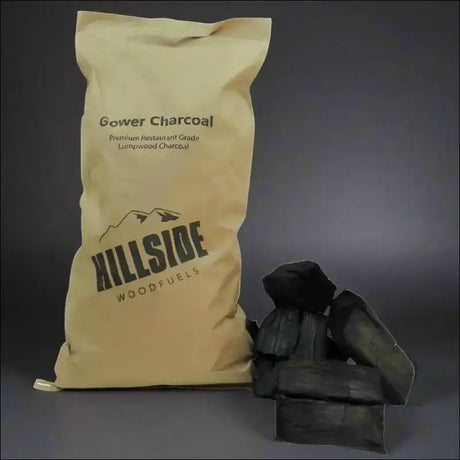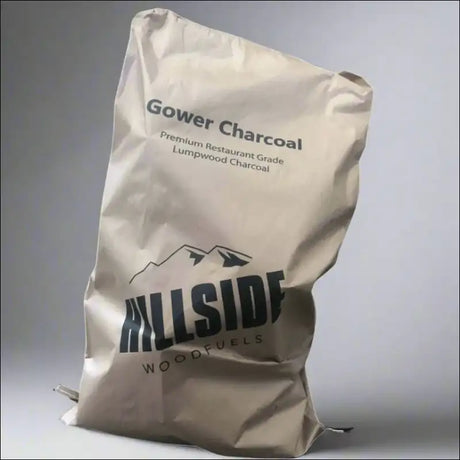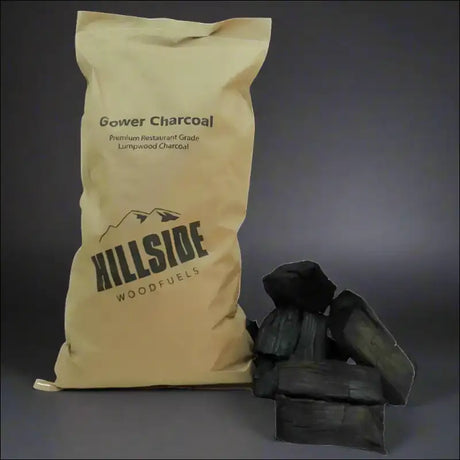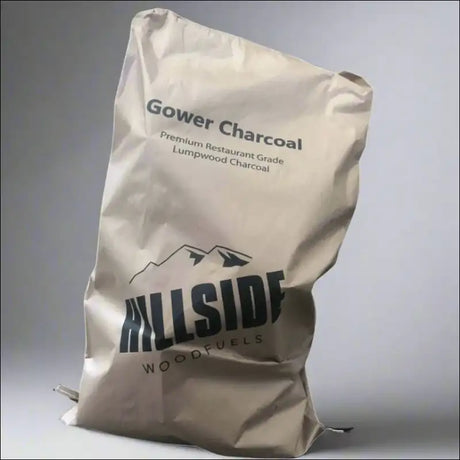For those passionate about the art of grilling, mastering the use of a charcoal grill is a rite of passage. Charcoal grilling is not just about cooking food; it's an experience that combines skill, knowledge, and the right tools to create flavorful masterpieces. Whether you're a seasoned pitmaster or a novice looking to up your game, understanding the essentials of charcoal grilling is key. This article will guide you through the best tools and techniques every grill enthusiast should know, from selecting the perfect grill to mastering the subtleties of fire management and flavor enhancement.
Key Takeaways
- Choosing the ideal charcoal grill involves considering size, material, and airflow control; kettle, barrel, and ceramic are popular types.
- Essential grilling tools include long-handled utensils, durable thermometers, and robust cleaning equipment to ensure safety and precision.
- Effective fire management is crucial, requiring knowledge of charcoal types, lighting methods, and heat control for various cooking methods.
- Grilling techniques such as direct and indirect grilling, managing flare-ups, and smoking are vital for preparing a range of dishes to perfection.
- Flavor enhancement is an art, involving the use of wood chips for smoking, homemade rubs and marinades, and complementary sauces to elevate the grilling experience.
Choosing the Right Charcoal Grill
Factors to Consider When Buying a Grill
When we're on the hunt for a new charcoal grill, there are several key factors we must weigh to ensure we make the best choice for our barbecuing needs. Size and portability are crucial considerations, especially if we plan to grill in different locations or have limited space.
Price is another important factor, but it's essential to balance cost with quality to find a grill that offers the best value. We also need to think about the grill's material and durability, as these will determine how well it withstands the elements and the test of time.
Here's a quick list of factors to keep in mind:
- Size and portability
- Price and value
- Material and durability
- Heat distribution and retention
- Ease of cleaning
- Additional features (like ash catchers, vents, etc.)
Remember, the right grill will not only fit your budget but also enhance your grilling experience, making it a joy rather than a chore.
Types of Charcoal Grills
When we dive into the world of charcoal grilling, we're met with a variety of grill types, each offering unique features and experiences. Kettle grills are the classic choice, beloved for their simplicity and versatility. For those of us who crave a bit more precision, ceramic grills provide excellent heat retention and control. Barrel grills appeal to the pitmaster with an eye for tradition, offering ample space for larger gatherings.
- Kettle Grills: Ideal for beginners and small gatherings.
- Ceramic Grills: Perfect for precise temperature management.
- Barrel Grills: Best for large events and smoking meats.
We should always strive to match our grill choice with our cooking style and the types of dishes we plan to prepare. Whether we're searing steaks or slowly smoking ribs, the right grill makes all the difference.
Remember, the fuel we choose is just as crucial as the grill itself. Choose sustainably harvested lumpwood charcoal for better grilling. Look for wood species details, diverse sizes for heat control, minimal sparks, high wood content, and low ash. Use a chimney starter and wood chunks for flavor. This not only enhances our grilling experience but also supports sustainable practices.
Top Grill Brands and Models
When it comes to selecting a top-notch charcoal grill, brand reputation and model features play a pivotal role. We've researched extensively to bring you a list of brands that stand out in the realm of grilling. Among them, Weber, Big Green Egg, and Kamado Joe are synonymous with quality and durability. Each brand offers unique models tailored to different grilling needs and preferences.
Weber grills are known for their ease of use and consistent performance, making them a favorite among both novices and seasoned pitmasters. Big Green Egg's ceramic grills excel in heat retention and versatility, while Kamado Joe's innovative designs offer exceptional cooking flexibility.
It's essential to choose a model that not only fits your budget but also complements your grilling style. Whether you're hosting a large barbecue or preparing a meal for two, there's a grill model designed to meet your specific needs.
Here's a quick glance at some of the top models from each brand:
- Weber Original Kettle Premium Charcoal Grill
- Big Green Egg Large
- Kamado Joe Classic III
Remember, the best grill for you is one that aligns with your grilling ambitions and lifestyle. Take the time to explore these models and find your perfect match.
Essential Grilling Tools and Accessories
Must-Have Utensils for the Grill Master
As we gather around the fiery hearth of the charcoal grill, we recognize the importance of having the right tools at our disposal. A well-equipped pitmaster is the maestro of the grill, orchestrating a symphony of flavors with precision and ease. At the heart of this culinary concert are the utensils that make all the difference.
Long-handled tongs are the extension of our hands, allowing us to flip, turn, and move food with accuracy while keeping a safe distance from the heat. A sturdy spatula, preferably with a thin edge, is indispensable for sliding under delicate fillets or hefty burgers alike. And let's not forget a good set of skewers for those mouth-watering kebabs.
Here's a quick rundown of the essentials:
- Long-handled tongs
- Spatula with a thin edge
- Durable skewers
- Basting brush for sauces
- Grill fork for piercing and prodding
- Meat thermometer for perfect doneness
Remember, the quality of your utensils can greatly influence your grilling experience. Investing in high-grade, durable tools not only ensures safety but also enhances your efficiency at the grill.
Thermometers and Temperature Control
We understand that maintaining the perfect temperature is crucial for grilling success. A reliable thermometer is a pitmaster's best friend, ensuring that meats are cooked to perfection every time. Whether you prefer digital or analog, instant-read or leave-in, the right thermometer will take the guesswork out of grilling.
Accuracy is key when it comes to thermometers. Here's a quick guide to help you choose:
- Digital Instant-Read: Fast and precise, ideal for quick checks.
- Analog Dial: Traditional and durable, but slower to read.
- Leave-In Probe: Monitors temperature over time, perfect for slow-cooking.
Remember, the goal is to keep a consistent temperature throughout the cooking process to achieve the best flavor and texture.
Always calibrate your thermometers regularly to ensure they provide accurate readings. This small step can make a significant difference in the outcome of your grilled dishes.
Cleaning and Maintenance Gear
After a satisfying grilling session, we know the importance of keeping our equipment in top shape. Proper cleaning and maintenance not only ensure a longer lifespan for our grills but also improve the quality of our cooking. We've gathered a list of essential gear that will make this task easier and more efficient.
- A sturdy grill brush for removing debris
- Grill cleaner solution to cut through grease
- Durable gloves to protect your hands
- A scraper to tackle tough residues
Consistency is key when it comes to maintenance. By regularly using these tools, we prevent buildup that can affect our grill's performance and, ultimately, the taste of our food.
Remember, a clean grill is the foundation of every great barbecue. Taking the time to properly care for your grill after each use will pay off in delicious dividends.
The Art of Fire Management
Understanding Charcoal Types and Uses
When we dive into the world of charcoal grilling, we quickly realize the importance of choosing the right type of charcoal. The type of charcoal you use can significantly affect the flavor and cooking time of your food. Lump charcoal, made from pure hardwood, is prized for its ability to burn hot and fast, making it ideal for searing steaks. In contrast, briquettes offer a more consistent burn rate and are perfect for longer cooking sessions.
Charcoal isn't just about the heat; it's also a flavor enhancer. Here's a quick rundown of the most common types of charcoal:
- Lump Charcoal: Best for high-heat cooking and quick grilling.
- Briquettes: Uniform in size, providing a steady temperature for a longer period.
- Binchotan: A high-grade Japanese charcoal known for its long burn time and clean heat.
Remember, the right charcoal can elevate your grilling game, providing that perfect smoky flavor and just-right sear that we all strive for. Choosing the right type can be as crucial as the cut of meat you're grilling.
Lighting Techniques for Quick and Even Heating
We've all been there, standing over the grill, waiting for the charcoal to reach the perfect glow. Proper lighting is crucial for a successful barbecue, and there are several techniques we can use to ensure quick and even heating. One popular method is the chimney starter, which uses a cylinder to hold the charcoal while it ignites, allowing for a faster and more uniform burn.
Stacking your charcoal in a pyramid shape before lighting can also help increase airflow and encourage even burning. Once lit, give the coals time to ash over before spreading them out. This usually takes about 15-20 minutes, depending on the charcoal type and weather conditions.
- Lighter fluid method: Soak the charcoal, light, and wait for the fluid to burn off.
- Electric starter: Place in the charcoal pile and plug in; no chemicals needed.
- Firestarter cubes: Tuck into the charcoal pile and light for a chemical-free start.
Remember, patience is key. Rushing the process can lead to uneven heat and longer cooking times. Let the coals do their work, and you'll be rewarded with the perfect cooking environment.
Controlling Heat for Different Cooking Styles
Mastering the control of heat on your charcoal grill is essential for achieving the perfect cook on a variety of dishes. The key to versatility lies in understanding how to manipulate the grill's temperature zones. For instance, when searing steaks, you'll want a high heat zone where the charcoal is piled up, providing intense direct heat.
Zonal cooking is a technique we often use to create areas of different temperatures within the grill. Here's a simple guide to setting up your grill for zonal cooking:
- High Heat Zone: Directly over the coals for searing and browning.
- Medium Heat Zone: Off to the side of the coals for cooking through without burning.
- Low Heat Zone: Furthest from the coals for slow cooking and smoking.
Remember, the placement of the lid can also affect the temperature. Keeping the lid on will trap heat and smoke, which is ideal for slow cooking and infusing flavor.
By managing these zones, you can grill a variety of foods simultaneously, each requiring different cooking temperatures. Whether you're grilling vegetables that need gentle heat or a thick cut of meat that requires a sear, controlling your heat zones will ensure each item is grilled to perfection.
Mastering Grilling Techniques
Direct vs. Indirect Grilling
When we grill, we often choose between two primary methods: direct and indirect grilling. Direct grilling involves cooking food directly over the heat source, perfect for searing steaks and grilling burgers to achieve that irresistible char and smoky flavor. It's the go-to method for quick-cooking items.
Indirect grilling, on the other hand, is akin to roasting or baking. The food is placed not directly over the coals but to the side, allowing for slower cooking. This method is ideal for larger cuts of meat that need to cook through without burning the outside.
-
Direct Grilling:
- High heat
- Quick cooking
- Directly over coals
-
Indirect Grilling:
- Lower heat
- Slow cooking
- Away from coals
Mastering the balance between direct and indirect grilling can elevate your barbecue to new heights. It's not just about the heat, but how you use it to cook your food to perfection.
Managing Flare-Ups and Smoke
We've all been there — the sizzle of the meat on the grill suddenly turns into a dramatic flare-up. Managing flare-ups is crucial to prevent charring and ensure even cooking. One effective method is to create a two-zone fire, where one side of the grill is hot and the other is cooler. This allows you to move food away from the flames when necessary.
Smoke is the essence of great barbecue, imparting that irresistible aroma and flavor. However, too much smoke can overwhelm your food. It's important to use the right amount of wood chips and to keep the grill lid closed to maintain a consistent temperature and smoke level.
Remember, controlling flare-ups and smoke isn't just about salvaging a meal; it's about mastering the art of grilling.
To help you manage these elements, here's a quick list of do's and don'ts:
- DO have a spray bottle of water handy for taming flames.
- DON'T leave the grill unattended; stay vigilant.
- DO use high-quality charcoal and firelighters for a superior BBQ experience.
- DON'T forget to clean the grill grates before and after grilling to prevent future flare-ups.
Perfecting Steaks, Burgers, and Vegetables
We've all experienced the thrill of grilling, but the true test of a pitmaster's skill is in perfecting the cook on steaks, burgers, and vegetables. Achieving the ideal sear and internal temperature requires not only practice but also a deep understanding of your grill's capabilities.
For steaks, timing is everything. Here's a simple guide to help you nail the perfect doneness every time:
- Rare: 2-3 minutes per side
- Medium Rare: 3-4 minutes per side
- Medium: 4-5 minutes per side
- Medium Well: 5-6 minutes per side
- Well Done: 6-7 minutes per side
Remember, these times can vary based on the thickness of the steak and the heat of the grill. Always use a meat thermometer to ensure accuracy.
When it comes to burgers, the key is to minimize flipping. Each burger should be flipped once, and only once, to maintain juiciness and form. For vegetables, the secret lies in the cut. Uniform slices ensure even cooking and a delightful char that enhances the natural flavors.
To elevate your grilling game, consider using premium hardwood charcoal. Its superior quality not only enhances the taste but also contributes to a more efficient and eco-friendly grilling experience.
By mastering these techniques, we ensure that every meal we grill is not just cooked, but crafted to perfection.
Enhancing Flavor with Seasonings and Sauces
Choosing Wood Chips and Chunks for Smoking
When we dive into the world of smoking, the choice of wood chips and chunks becomes as crucial as the cut of meat. Different woods impart unique flavors, and matching the right wood to your dish can elevate your barbecue to new heights. For instance, hickory and mesquite deliver a strong, smoky taste, perfect for robust meats like beef brisket, while apple and cherry woods offer a sweeter, milder smoke ideal for chicken and pork.
Wood selection is not just about flavor, but also about the burn time and smoke intensity. Here's a quick guide to help you choose:
- Hickory: Strong, bacon-like flavor. Great for pork and ribs.
- Mesquite: Very strong, earthy flavor. Best for short smokes.
- Apple: Mild and sweet. Versatile for poultry and pork.
- Cherry: Mild and fruity. Good for red meat and pork.
- Oak: Medium smoke flavor. A good all-rounder.
Remember, the goal is to complement the meat, not overpower it. Balance is key, and experimenting with different wood types can lead to delicious discoveries.
Lastly, don't forget to consider our Global BBQ Spice Blend Shakers Set and Thai Street Food BBQ Spice Blend. These spice rubs enhance meat flavors in barbecue cuisine, creating a crust and deep flavors that will impress any guest at your cookout.
Crafting Signature Rubs and Marinades
We understand the transformative power of a good rub or marinade on our grilled dishes. The right combination of spices and herbs can elevate the simplest cuts of meat to gourmet levels. Crafting your own signature blends allows for endless creativity and the ability to tailor flavors to your specific tastes.
Marinades serve a dual purpose: they tenderize and infuse the meat with flavor. A basic marinade includes an acid (like vinegar or citrus juice), oil, and your choice of seasonings. Here's a simple guideline for creating your own marinade:
- Start with 1 part acid to 3 parts oil.
- Add in minced garlic, onions, or shallots for a flavor base.
- Mix in a generous helping of your favorite herbs and spices.
- Let your meat soak in the mixture for several hours, or even overnight, in the refrigerator.
When it comes to rubs, think of them as the dry counterpart to marinades. A good rub should have a balance of sweet, salty, and spicy components to complement the natural flavors of the meat.
Remember, while restaurant grade charcoal is efficient and works with any grill, it's not necessary to achieve a high-quality flavor. Your homemade rubs and marinades, paired with standard charcoal, can produce an equal grill flavor that will impress any barbecue aficionado.
The Best Sauces to Complement Your Grilled Dishes
After mastering the grill, we know that the right sauce can elevate a good barbecue to greatness. The perfect sauce balances flavor, texture, and aroma, complementing the smokiness of the grill. We've experimented with countless combinations and have found that certain sauces pair exceptionally well with specific types of grilled foods.
Barbecue sauce is a classic choice, but let's not stop there. Here's a quick guide to matching sauces with your favorite grilled items:
- Steak: A rich, savory mushroom sauce or a classic peppercorn.
- Chicken: Try a tangy barbecue or a zesty lemon-herb sauce.
- Pork: A sweet and spicy apple cider glaze works wonders.
- Vegetables: A light balsamic reduction or an herby chimichurri.
Remember, the key to a successful sauce pairing is to consider the natural flavors of the food and how the sauce can enhance, not overpower, that taste.
Feel free to experiment with these suggestions and find your own perfect pairings. The journey to becoming a pitmaster includes becoming a sauce aficionado as well!
Conclusion: The Heart of the Grill
As we've explored the various tools and accessories that can elevate your charcoal grilling experience, it's clear that the right equipment can make all the difference. From the essential chimney starter to the precision of a good thermometer, each tool plays a pivotal role in mastering the art of charcoal grilling. Remember, while the tools are important, it's the skill and passion of the pitmaster that truly brings the heat to the grill. So equip yourself with the best, practice your techniques, and let the savory smoke do the talking. Whether you're a seasoned grill master or a budding barbecue enthusiast, these essentials will help you on your journey to creating unforgettable flavors and memories around the fire.
Frequently Asked Questions
What are the key factors to consider when purchasing a charcoal grill?
When buying a charcoal grill, consider the size and cooking area, build quality and materials, temperature control features, ease of cleaning, portability, and your budget.
What are the different types of charcoal grills available?
The main types of charcoal grills include kettle grills, barrel grills, ceramic or kamado grills, and portable grills. Each type offers different benefits for cooking styles and convenience.
Which grilling utensils are essential for a pitmaster?
Essential grilling utensils include a sturdy pair of tongs, a spatula, grill brush, meat fork, skewers, and a basting brush. A good knife set and cutting board are also important.
How do I properly manage the temperature of my charcoal grill?
Manage your grill's temperature by adjusting the air vents to control oxygen flow, using a thermometer to monitor the heat, and arranging the coals for direct or indirect cooking as needed.
What techniques can I use to light charcoal quickly and evenly?
To light charcoal quickly and evenly, use a chimney starter with crumpled newspaper or lighter cubes at the bottom. This method eliminates the need for lighter fluid and ensures even heating.
What are the best woods to use for smoking on a charcoal grill?
The best woods for smoking include hickory, mesquite, apple, cherry, and oak. Each wood type imparts a unique flavor to the food, so choose based on the taste profile you desire.








